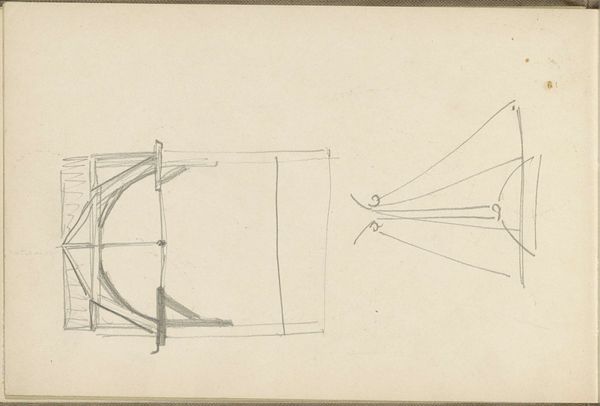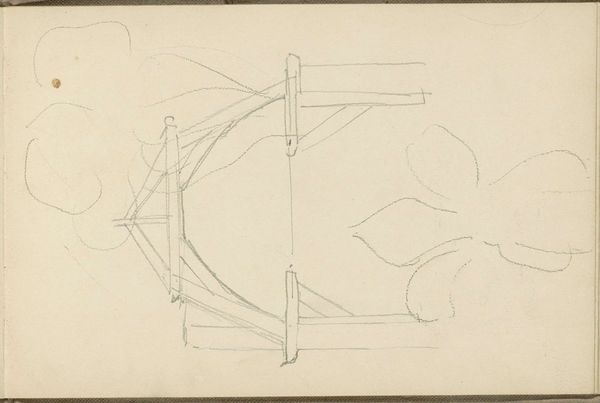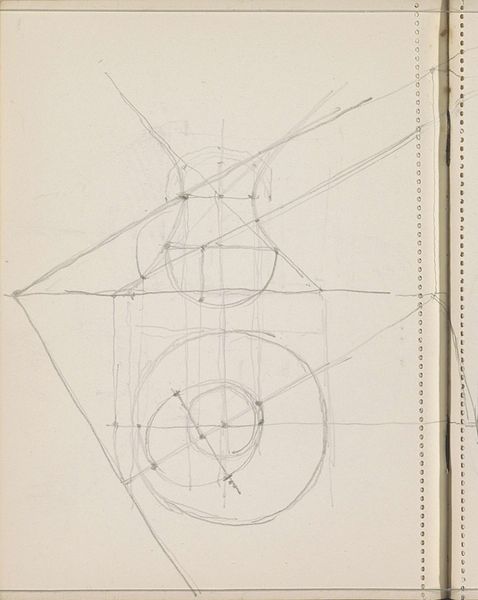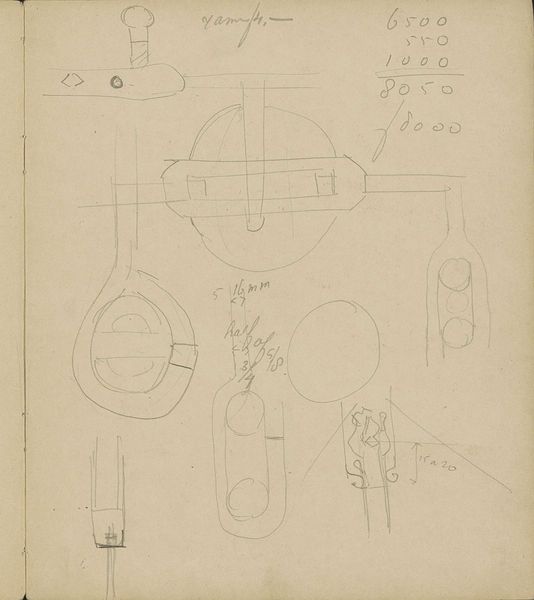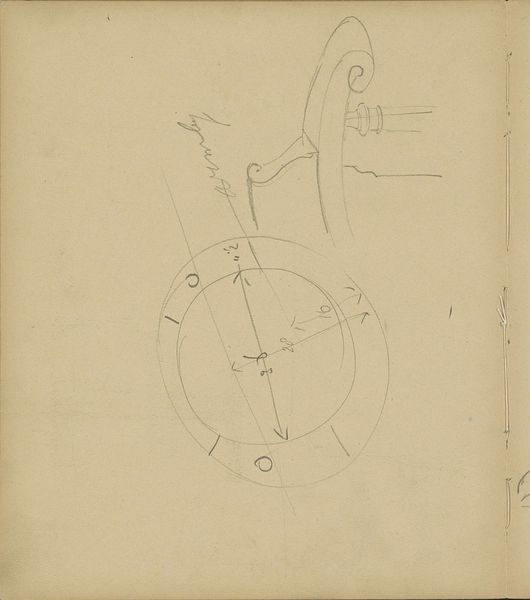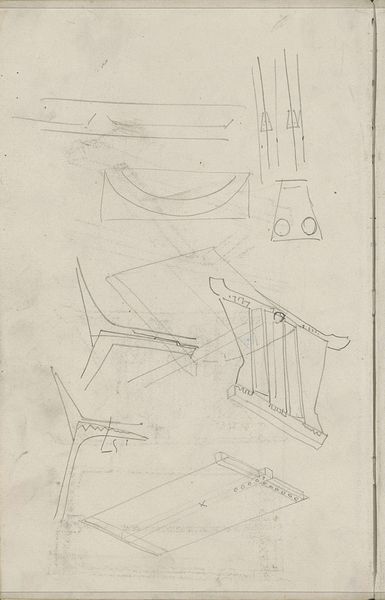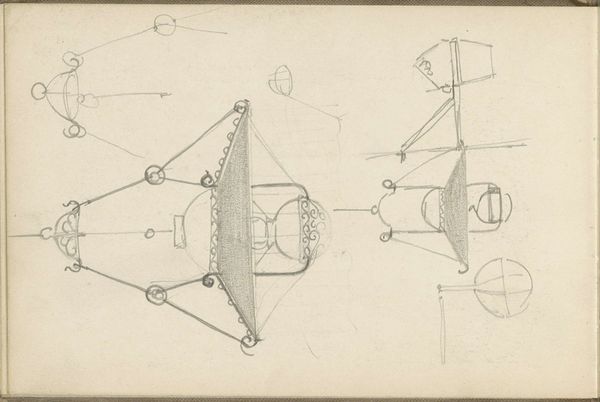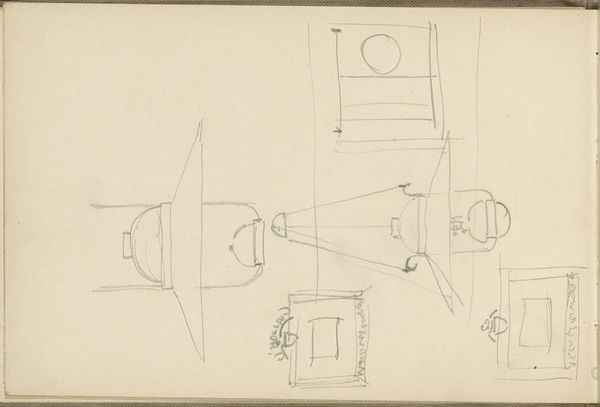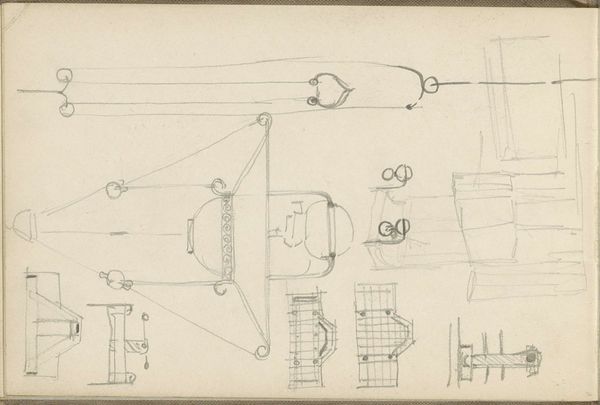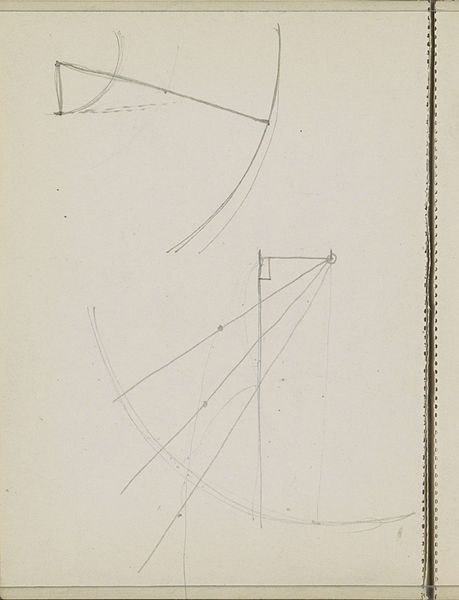
drawing, paper, pencil, architecture
#
drawing
#
art-nouveau
#
paper
#
form
#
geometric
#
pencil
#
line
#
architecture
Copyright: Rijks Museum: Open Domain
Curator: Welcome! Here we have “Architectuurstudies en decoratieve patronen”, or “Architectural studies and decorative patterns,” a drawing dating from around 1905 by Carel Adolph Lion Cachet. Editor: Well, looking at it, my first thought is of architectural blueprints. There’s a sense of both precision and freedom in these sketches; all those soft pencil lines on this seemingly basic paper. Curator: Absolutely. Cachet, a prominent figure in the Dutch Art Nouveau movement, was deeply involved in redefining artistic expression. This drawing really showcases how the focus shifted from merely depicting reality to really trying to create an immersive artistic environment. He later abandoned drawing and printmaking for his work with textiles and interior design, in an effort to make art more directly useful. Editor: You can see that shift beginning here. These architectural studies appear functional, of course, but then they are interwoven with those intricate decorative patterns. It blurs that supposed hierarchy between art and craft. It makes you wonder about the workshops where these patterns might have been translated into material form, who labored to bring them to life. Curator: Exactly, these designs reflected broader social aspirations. This drawing would have offered a tangible link between the growing Dutch national identity and international artistic trends of the era, especially at exhibitions. This piece would have been easily accessible to both middle and working class Dutchmen, to expose people to the best of modern design. Editor: It makes me consider how radical this level of engagement with practical applications of art would be considered even today. We have to ask who is deemed “craftsman” and who is the celebrated “artist” – and whether or not those classifications matter. What implications did that categorization have, both then and now? Curator: Ultimately, I see it as a reflection of art’s vital role in cultural expression, both now and a century ago. It demonstrates how artwork reflects shifting societal and political winds, constantly altering our perspectives. Editor: I see how an unassuming pencil sketch on paper can offer insights into artistic experimentation, labor, and how the turn-of-the-century craft movement challenged industrial standardization. Fascinating.
Comments
No comments
Be the first to comment and join the conversation on the ultimate creative platform.
